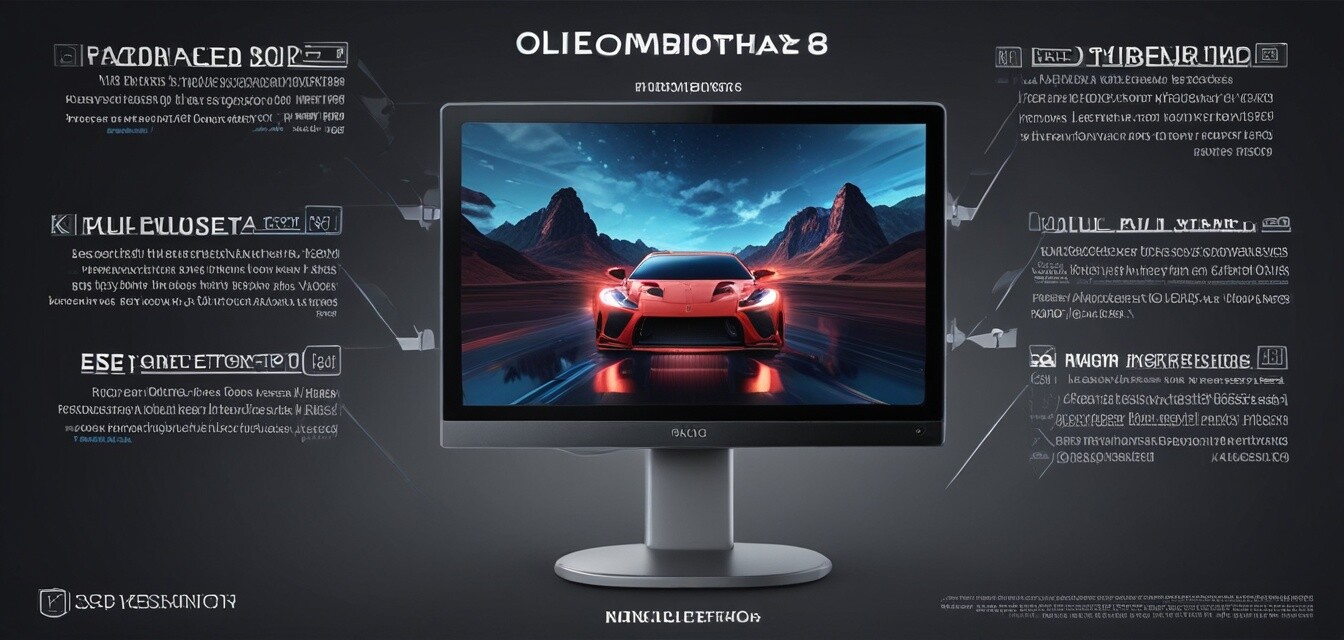
Factors Affecting Price: What to expect from OLED monitors
Key Takeaways
- Price can vary significantly based on features like size, resolution, and technology.
- Brand reputation and product availability are also key factors in determining cost.
- Understanding pricing variations can help you make a more informed purchasing decision for gaming monitors.
When diving into the world of OLED gaming monitors, many consumers are often surprised by the price range. There is a wide spectrum of prices, with some models being quite affordable while others carry premium costs. In this guide, we will explore the various factors affecting the price of OLED monitors, providing insights on how to find the best value for your budget in the gaming sector.
Factors influencing the pricing of OLED monitors
| Factor | Description |
|---|---|
| Screen Size | Larger screens generally come with higher price tags due to increased production costs and demand. |
| Resolution | Higher resolutions like 4K typically lead to an increase in price, demanding more advanced tech. |
| Refresh Rate | A higher refresh rate provides smoother gameplay but adds to the cost significantly. |
| Brand | Established brands may charge more, reflecting their reputation and customer service. |
| Panel Technology | Advanced OLED technology can increase production costs, influencing the final retail price. |
Understanding the pricing structure
To comprehend the pricing structure better, it’s essential to break down the factors at play. Let’s delve deeper into the specifics:
Screen size and its impact
The size of the monitor can dramatically affect its pricing. While larger monitors typically provide a more immersive gaming experience, they also tend to be more expensive. Here’s a quick overview of how size correlates with cost:
| Screen Size (inches) | Typical Price Range |
|---|---|
| 27 | $300 - $700 |
| 34 | $800 - $1200 |
| 48+ | $1500+ |
Resolution: A critical element
Resolution is another crucial factor that impacts pricing. Monitors with higher resolutions deliver more detailed visuals, but they often come at a premium. Here's how different resolutions compare:
| Resolution | Typical Price Increase |
|---|---|
| 1080p | Base Price |
| 1440p | +20% - 40% |
| 4K | +50% - 100% |
Refresh rate vs. response time
Gamers prioritize refresh rates as they correlate directly with performance. While higher refresh rates enhance gaming, they also lead to increased costs. Here are typical rates and their corresponding prices:
| Refresh Rate | Typical Price Tag |
|---|---|
| 60Hz | Base Price |
| 120Hz | +30% - 50% |
| 240Hz | +50% - 80% |
Brand reputation and its effects on pricing
The brand itself can significantly influence the price of OLED monitors. Established brands often charge more due to their reputation and the assurance of quality. Consider exploring our Buying Guides for insights on how to choose a reputable brand based on your needs.
Production costs: The role of technology
Technological advancements continuously reshape the OLED market. As production costs evolve, so does pricing. When newer technologies are introduced, initial prices can be steep, but they usually stabilize over time. Always keep an eye on the latest trends to make informed decisions.
Pros
- High-quality visuals with vivid colors and contrast.
- Faster refresh rates enhance gaming experiences.
- Long-lasting screens reduce the total cost of ownership over time.
Cons
- Higher upfront costs compared to traditional monitors.
- Should consider ongoing advancements which can result in outdated technology.
- More fragile than traditional LCDs, requiring careful handling.
Finding value in your purchase
To find the best value for your money when purchasing an OLED monitor, consider the following tips:
Tips for buying an OLED monitor
- Compare multiple brands and models to ensure you get the best features for your budget.
- Watch for sales and promotions, especially around holiday seasons.
- Read reviews and check for customer feedback to understand real-world performance.
- Consider your gaming style; if you're a casual gamer, you may not need the most expensive model.
Conclusion
In conclusion, understanding the factors that affect the pricing of OLED monitors is integral to making an informed purchasing decision. From screen size and resolution to brand reputation and technology, each element plays a role in determining the final price. By prioritizing your gaming needs and budget, you'll find a monitor that delivers fantastic value while enhancing your gaming experience.